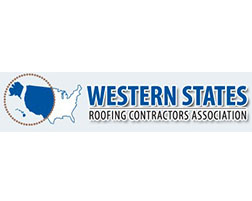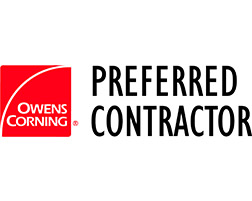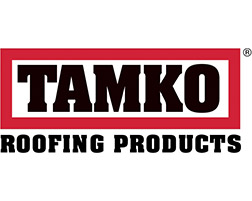
Pros and Cons of Turbine Roof Vents
Turbine roof vents, often referred to as “whirlybirds,” have become a popular choice for homeowners and business owners in Denver, Colorado, who seek efficient ventilation solutions for their properties. Proper ventilation is crucial for any building, as it plays a pivotal role in maintaining a comfortable indoor environment, prolonging the lifespan of roofing materials, and ensuring energy efficiency. The pros and cons of turbine roof vents is a topic of interest for many, especially those who are considering installing or replacing their current ventilation system. These vents harness the power of wind to expel hot air from the attic, making them both energy-efficient and environmentally friendly. As we delve deeper into this topic, we’ll explore the numerous advantages and potential drawbacks of using turbine roof vents, providing valuable insights for homeowners and business owners alike.

Advantages of Turbine Roof Vents
Among the pros and cons of turbine roof vents, the benefits should always come first. Turbine roof vents have gained significant traction among homeowners and business owners in Denver, Colorado, for these gains. One of the primary advantages of these vents is their energy efficiency. Unlike other ventilation systems that rely on electricity, turbine roof vents harness the natural power of the wind to operate. This not only reduces energy consumption but also translates to savings on electricity bills.
Furthermore, these vents are renowned for their effective ventilation capabilities. By drawing out hot and stale air from the attic, they promote a balanced and efficient airflow, which is crucial for maintaining a comfortable indoor temperature and preventing issues like mold and mildew growth. This article from Airflow Academy delves deeper into the benefits of turbine roof vents.
Another noteworthy advantage is their versatility. Turbine roof vents come in various sizes and designs, making them suitable for different roof types and architectural styles. Their durability is also commendable, with many homeowners reporting that their vents have withstood the test of time, even in challenging weather conditions.
Disadvantages of Turbine Roof Vents
After the advantages, the pros and cons of turbine roof vents topic must always include the most important shortcomings. It’s essential to understand their potential drawbacks before making an installation decision. Here are some of the disadvantages associated with turbine roof vents:
- Reliant on Winds: Turbine roof vents harness the power of wind to expel hot air from the attic. This reliance on wind is both their strength and weakness. On calm days with little to no wind, these vents may struggle to spin, reducing their efficiency. If your home is in an area with infrequent wind, turbine vents might not be the best choice.
- Prone to Damage: Being outdoor installations, whirlybirds are exposed to various weather conditions. They can be damaged by hail, strong winds, or even rust over time. Moreover, their moving parts make them more susceptible to wear and tear compared to static roof vents.
- Aesthetic Concerns: While functional, turbine roof vents are not always the most visually appealing. Their noticeable presence on the roof can potentially reduce a home’s curb appeal, especially if they are not well-maintained or have started to show signs of aging.
- Noise Levels: Initially, turbine vents operate quietly. However, as they age, their spinning components can wear out, leading to a whirring or squeaking noise. If you start hearing such sounds, it might be an indication that the vent requires maintenance or replacement.
- Potential for Leaks: If not properly installed or if damaged, turbine roof vents can become a source of leaks. Ensuring professional installation and regular inspections can mitigate this risk.
Comparison with Other Vent Types
When considering attic ventilation, homeowners and business owners have several options to choose from. Turbine roof vents are one such option. But how do they stack up against other vent types? Let’s delve into a comparison to provide a clearer understanding:
- Turbine Roof Vents vs. Flat Roof Vents: Turbine vents harness the power of wind to expel hot air from the attic. When the wind blows, they can move more air than flat vents. However, on calm days, their efficiency might be reduced. According to Family Handyman, replacing a turbine vent with a standard flat vent is acceptable as long as the vent is adequately sized for the attic’s square footage.
- Turbine Roof Vents vs. Ridge Vents: Ridge vents run along the roof’s peak and provide passive airflow. Unlike turbines, they don’t have moving parts and rely on natural convection. While ridge vents offer a more subtle appearance, turbine vents can provide superior ventilation when powered by wind.
- Turbine Roof Vents vs. Electrically Powered Vents: Electrically powered vents use fans to move air out of the attic. They can be set to activate at specific temperatures or humidity levels, ensuring consistent ventilation. While they offer precise control, they also consume electricity, unlike wind-powered turbine vents.
- Maintenance and Longevity: Turbine vents have moving parts, which can wear out over time. In contrast, static vents like ridge vents require minimal maintenance. However, with proper care, turbine vents can last for 20-25 years.
- Aesthetics: While turbine vents are functional, they might not be the most visually appealing option for every homeowner. Other vent types, like ridge vents, offer a more integrated look with the roofline.
- Cost: Turbine vents are generally more affordable than electrically powered vents. However, the total cost can vary based on the quality, brand, and installation charges.

Considerations for Installation of Turbine Roof Vents
When considering the installation of turbine roof vents, it’s essential to be well-informed about the various factors that can influence the success and efficiency of the venting system. Here are some key considerations to keep in mind:
- Proper Sizing: The size of the turbine vent matters. It’s crucial to choose a size that matches the square footage of your attic space. A vent that’s too small won’t provide adequate ventilation, while one that’s too large can lead to unnecessary heat loss.
- Placement: The location of the turbine vent on the roof can affect its efficiency. Ideally, it should be placed at the highest point of the roof to effectively draw out the hot air. Avoid placing vents near obstructions or in areas where they might be shaded for long periods.
- Maintenance Access: Turbine vents have moving parts, and over time, they might require maintenance. Ensure that the vent is easily accessible for cleaning, lubrication, or potential repairs.
- Weather Conditions: While turbine vents are designed to prevent rain and snow from entering, it’s essential to consider the typical weather conditions in your area. In regions with heavy snowfall, for instance, ensure that the vent has adequate clearance from the roof’s surface to prevent snow accumulation.
- Professional Installation: While it might be tempting to install a turbine vent yourself, it’s recommended to hire a professional. Improper installation can lead to leaks, reduced efficiency, and potential damage to your roof structure.
- Material Choice: Turbine vents come in various materials, including aluminum and stainless steel. Choose a material that’s resistant to rust and corrosion, especially if you live in a coastal area or a region with high humidity
Safety Precautions for Turbine Roof Vents
Turbine roof vents, while efficient and eco-friendly, come with their own set of safety considerations. Ensuring that these vents are installed and maintained correctly is crucial to prevent potential hazards and ensure optimal performance. Here are some safety precautions to keep in mind:
- Secure Installation: Turbine vents, due to their rotating nature, can become dangerous projectiles in strong winds if not securely installed. Always ensure that the vents are anchored firmly to the roof structure.
- Regular Inspections: Over time, the moving parts of a turbine vent can wear out. Regularly inspect the vents for signs of wear and tear, rust, or damage. Address any issues promptly to prevent larger problems down the line.
- Avoid DIY Installations: While there are many DIY guides available, it’s recommended to hire a professional for the installation. Improper installation can lead to leaks, reduced efficiency, and potential damage to your roof structure.
- Seal Tightness: Ensure that the seal around the turbine vent is tight and waterproof. A loose seal can allow water to seep in, leading to potential water damage inside the property.
- Noise Considerations: Some turbine vents can produce noise, especially during high winds. If noise is a concern, consider investing in vents designed to operate quietly or adding noise-reducing measures.
- Winter Precautions: In areas with heavy snowfall, ensure that the vents are cleared of snow regularly. Snow accumulation can hinder the vent’s operation and add unnecessary weight to the roof.
- Debris Clearance: Regularly check and clear the vents of any debris, such as leaves or bird nests, that might obstruct airflow.

Summary
The pros and cons of turbine roof vents have been uncovered. Over the years, turbine roof vents have gained popularity among homeowners due to their efficiency and eco-friendly nature. These vents harness the power of the wind to create suction, effectively pulling air out of homes, especially in attics and crawl spaces. The primary advantage of turbine roof vents is their wind-powered operation, eliminating the need for electricity and offering significant cost savings. They also play a pivotal role in enhancing indoor air quality by expelling musty odors and contaminants.
However, like any other product, turbine roof vents come with their set of challenges. Improper installation can weaken the roof structure, and there’s a potential risk of water ingress if the seal isn’t tight. Additionally, their efficiency is contingent on windy conditions, and they can produce noise under certain circumstances. Despite these drawbacks, when installed and maintained correctly, turbine roof vents can be a valuable addition to homes, promoting energy efficiency, comfort, and roof longevity.




































